Welcome to the essential C major chord! If you’re starting your guitar journey, mastering the C major chord is one of the very first and most rewarding steps you can take. It’s a foundational chord that appears in countless songs across genres.
On this page, we’ll guide you through two fantastic ways to play the C major chord. First, we’ll explore the most common and versatile version – the one you’ll use most often. Then, for absolute beginners or those who find the standard version a bit tricky at first, we’ll introduce an even simpler, one-finger C chord. Let’s get started and make some music!
Unlocking the Standard C Major Chord
The most widely used version of the C major chord involves three fingers and a satisfyingly full sound. You’ll strum five strings to bring this chord to life.
This version of the C chord will require a little finger stretch, particularly with your third finger. Don’t worry if it feels a bit awkward initially; with a little practice, you’ll find your fingers becoming more flexible and the stretch will become easier. The key is to aim for placing your third finger just behind the 3rd fret.
Finger arching is also crucial for a clean and clear C major chord. Use the very tips of your fingers to press down the strings. This technique ensures you avoid accidentally muting adjacent strings, which can lead to unwanted buzzing or muffled sounds.
Step-by-Step Breakdown
Let’s break down the standard C major chord into easy-to-follow steps:
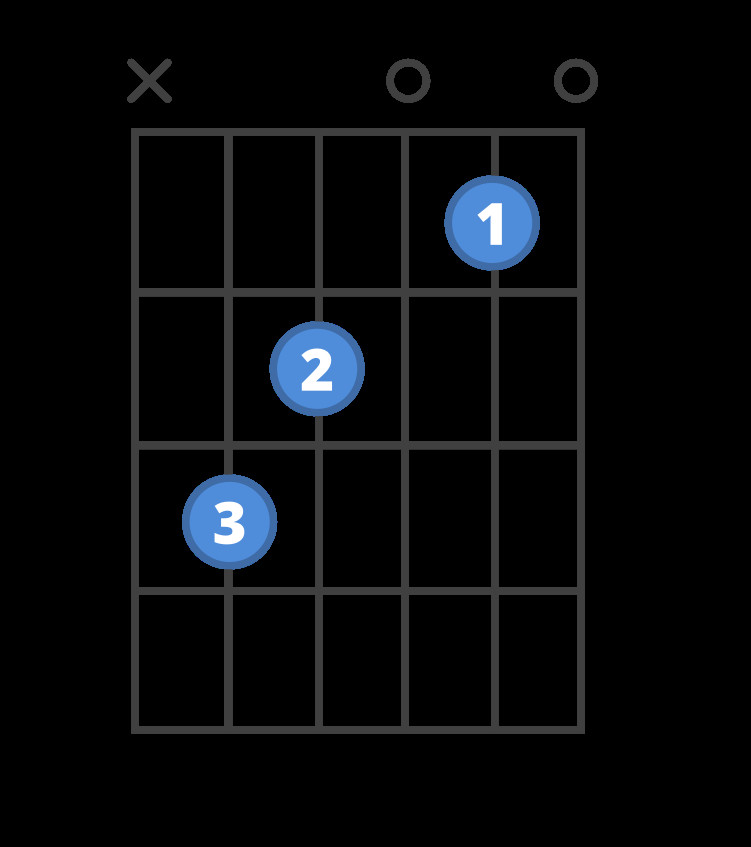 C Major Chord Diagram for Guitar
C Major Chord Diagram for Guitar
Need help understanding chord diagrams? Learn how to read guitar chord diagrams here.
Step One: Finger 1 – The Foundation
Begin by placing your first finger on the 1st fret of the 2nd string (B string). Remember, guitar strings are numbered from thinnest (1st string – high E) to thickest (6th string – low E).
When we refer to the “1st fret,” we mean the space just behind the metal fret bar, closer to the headstock of your guitar, not directly on top of the fret.
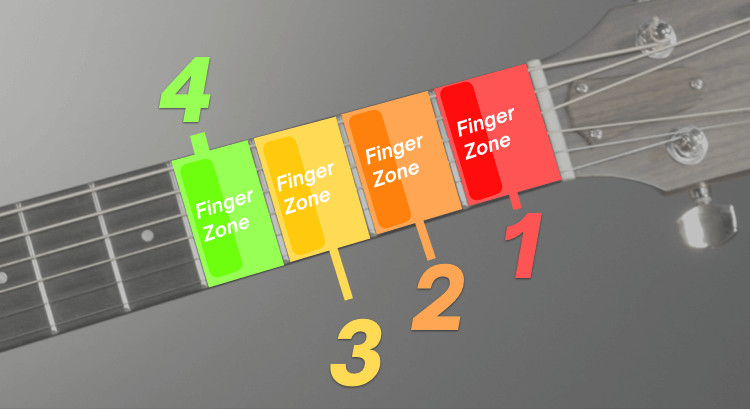 Diagram of Finger Zones on a Guitar Neck
Diagram of Finger Zones on a Guitar Neck
Looking at the diagrams above, you would position your first finger on the string indicated in orange within the orange finger zone. Like this:
Step Two: Finger 2 – Adding Depth
Next, place your second finger on the 2nd fret of the 4th string (D string).
Take a moment to observe your second finger. Notice how it naturally curves over the first three strings. Ideally, you want to press down on the 4th string using just the tip of your finger. This curvature is essential for achieving a clear, resonant sound from your C major chord.
Step Three: Finger 3 – Completing the Chord
Now, position your third finger on the 3rd fret of the 5th string (A string).
This step might feel like a bit of a stretch initially. Be patient and persistent.
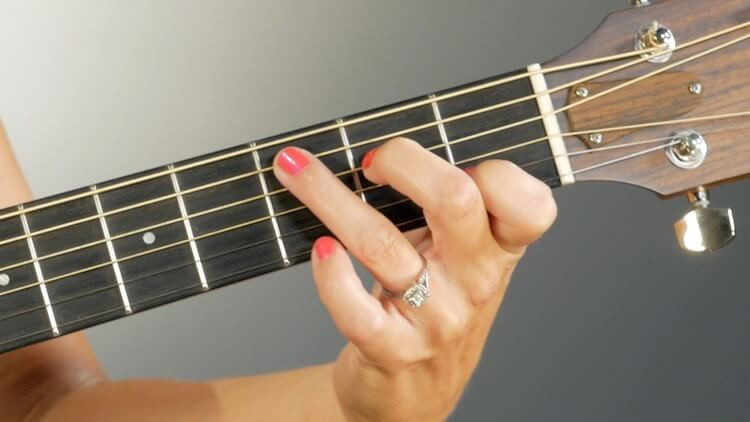 Close-up of Finger 3 Placement for C Major Chord
Close-up of Finger 3 Placement for C Major Chord
Observe how the hand model in the image reaches as far into the finger zone as comfortably possible. Positioning your finger closer to the fret minimizes the effort needed to press down and prevents string buzz.
Step Four: Strumming for Sound
Some guitar chords require you to strum all six strings, while others, like the C major chord, are played by strumming only a selection.
For the C major chord, you will strum only the thinnest five strings. Avoid strumming the thickest 6th string (low E).
Position your pick or thumb on the 5th string (A string), which is the second thickest string, and strum downwards across to the thinnest string (1st string – high E). By excluding the thickest string, you’ll produce a perfect C major chord!
The Simpler One-Finger C Chord
When you’re brand new to guitar, forming chords can feel like a finger puzzle. It’s incredibly important to start playing music right away, even from your very first practice session.
That’s where the one-finger C chord comes in! This simplified version lets you play a C chord almost instantly.
It contains all the same notes as the standard three-finger version, but the sound is less rich and full. However, it’s a fantastic starting point.
Simply place your first finger on the 1st fret of your 2nd string (B string), and strum the thinnest three strings (1st, 2nd, and 3rd strings – high E, B, and G). That’s all there is to it!
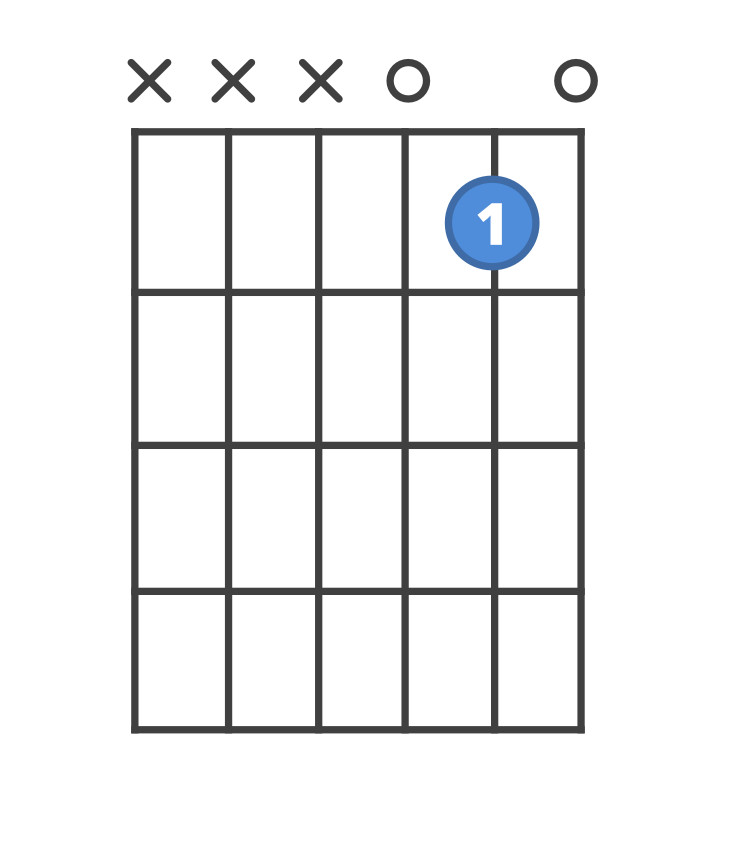 One-Finger C Major Chord Diagram for Guitar
One-Finger C Major Chord Diagram for Guitar
Need help understanding chord diagrams? Learn how to read guitar chord diagrams.
Once you feel comfortable with this one-finger C chord, challenge yourself to learn the fuller sounding, standard version of the C major chord we covered earlier. You’ll be amazed at how quickly you progress!
Enhance Your Learning with Chord Coach
Take your C major chord practice to the next level with the ChordBank App’s interactive Chord Coach feature!
 ChordBank App Interface on iPhone
ChordBank App Interface on iPhone
ChordBank’s Chord Coach listens through your phone’s microphone as you play, providing real-time guidance, string by string. It’s like having a personal guitar tutor in your pocket.
Start Playing C Major with Chord Coach »
Beginner Guitar Lessons
If you’ve found learning guitar chords challenging, our comprehensive “Chords For Beginners” lesson series is designed to make your learning journey smooth and enjoyable.
In this series, you’ll learn essential skills like reliably tuning your guitar (yes, really!), mastering the most important beginner chords, and developing your rhythm – all within just a few days.
Explore “Chords for Beginners” Lessons »
Practice Smarter, Not Harder
To truly master the C major chord, consistent and focused practice is key. ChordBank offers a range of practice drills and engaging games specifically designed for beginners learning the C major chord.
These practice tools and games open directly within the ChordBank App on your iPhone or iPad.
To internalize chords and build muscle memory, you need to play them repeatedly. Make practice fun and effective with these resources!
Interactive Games for Chord Mastery
 ChordBank App Interface on iPhone
ChordBank App Interface on iPhone
 ChordBank App Interface on iPhone
ChordBank App Interface on iPhone
Dive into games like EmojiHunt or ChordPOP! while practicing transitioning your fingers on and off the C major chord. ChordBank listens via your iPhone’s microphone and reacts to your playing, making practice interactive and motivating.
Play EmojiHunt: C Major Chord »
Play ChordPOP!: C Major Chord »
Smart Flashcards for Chord Transitions
Learning to switch smoothly between chords is a crucial step in progressing from simply owning a guitar to actually playing guitar.
ChordBank’s Smart Flashcards are designed to help you master chord changes effectively.
Practice Chord Changes: C Major to A Minor
The transition from C major to A minor is an excellent starting point for practicing chord changes.
C Major Chord Diagram:
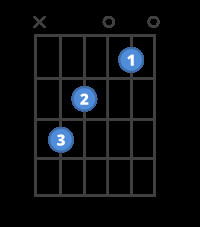 C Major Chord Diagram for Flashcards
C Major Chord Diagram for Flashcards
A Minor Chord Diagram:
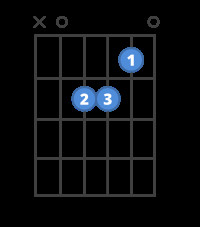 A Minor Chord Diagram for Flashcards
A Minor Chord Diagram for Flashcards
As you can see from the diagrams, these two chords utilize the same strings and involve similar finger positions. You can even keep your first finger anchored in the same spot, making it easier to orient your hand as you move your second and third fingers.
Practice C Major and A Minor Chord Changes »
Practice Chord Progressions: C Major, G Major, and D Major
Another excellent chord progression for beginners involves C major, G major, and D major chords.
C Major Chord Diagram:
 C Major Chord Diagram for Flashcards
C Major Chord Diagram for Flashcards
G Major Chord Diagram:
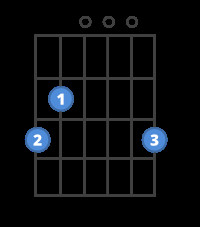 G Major Chord Diagram for Chord Progression
G Major Chord Diagram for Chord Progression
D Major Chord Diagram:
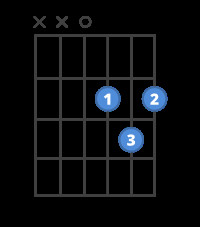 D Major Chord Diagram for Chord Progression
D Major Chord Diagram for Chord Progression
Practice C Major, D Major, and G Major Chord Progressions »
About the Author:
Anna Freitas holds a B.A. from Berklee College of Music and is an active guitarist and vocalist performing throughout New England. She is dedicated to music education and continues to teach guitar to students both in person and online via Skype. Learn more about Anna Freitas.
